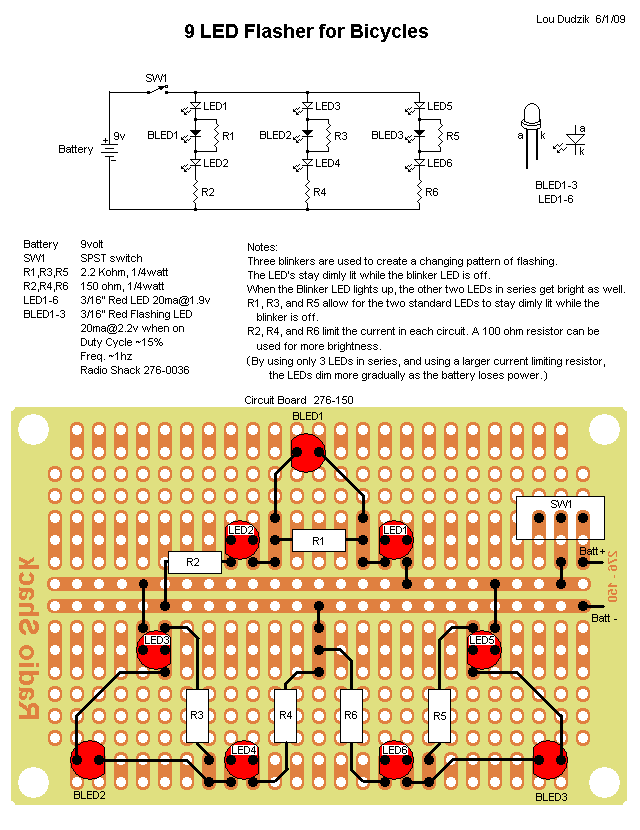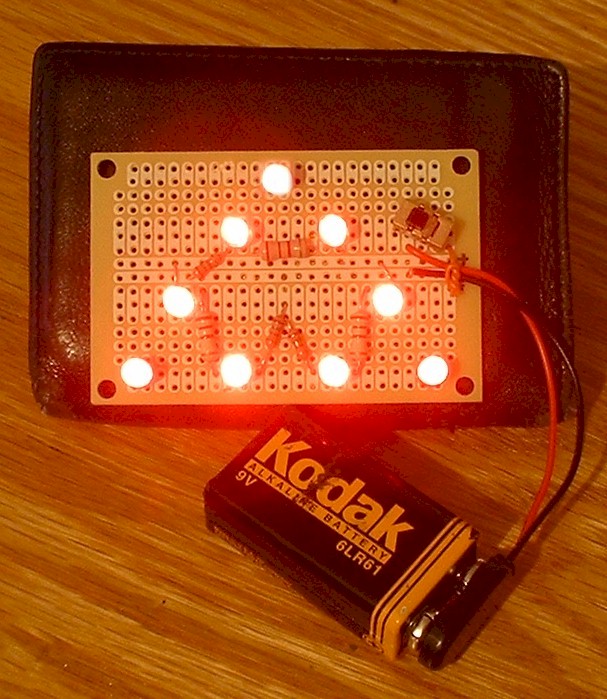
9 Volt LED Flasher
for Bicycles

9 Red LED Flasher
for Bicycles
Using a 9 Volt Battery
Louis Dudzik 6/2/09
This project is an LED flasher for use at night by bicyclists.The basic circuit is very simple and creates a building block for the flasher assembly. It uses a blinking (flashing) red LED to turn on two other red LEDs which are in series with the blinking LED. The blinking LED is Radio Shack part number 276-0036. It flashes about once a second and stays on for about an eighth of a second. This basic circuit is used 3 times to create the flasher unit.
There is also a resistor in series with the diodes to limit the current in the LEDs. It will be about 100 to 150 ohms, and should be selected to limit the current during a flash to about 0.02 amps.
Another resistor is placed in parallel to the blinking LED. This resistor allows the other LEDs to stay dimly lit while the blinking LED is off. This ensures there is always some light visible. This resistor is selected so there is approximately 0.001 to 0.002 amps while the blinking LED is off.
The full circuit of the flasher unit is really just 3 iterations of the same basic circuit in parallel. This works nicely since the 3 blinking LEDs won't be at the exact same frequency. This causes a nice, random flashing pattern which is very eye-catching to motorists.
With a standard 9 volt battery, the flasher can be expected to run for 24 to 48 hours continuously, possibly longer. Actual run time depends on the LEDs and values of the resistors. Obviously, the brighter it is, the shorter the battery life will be.
